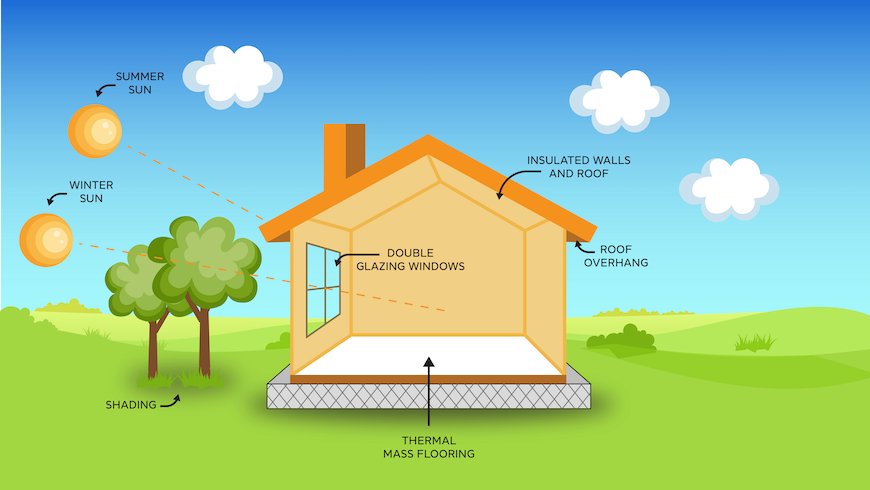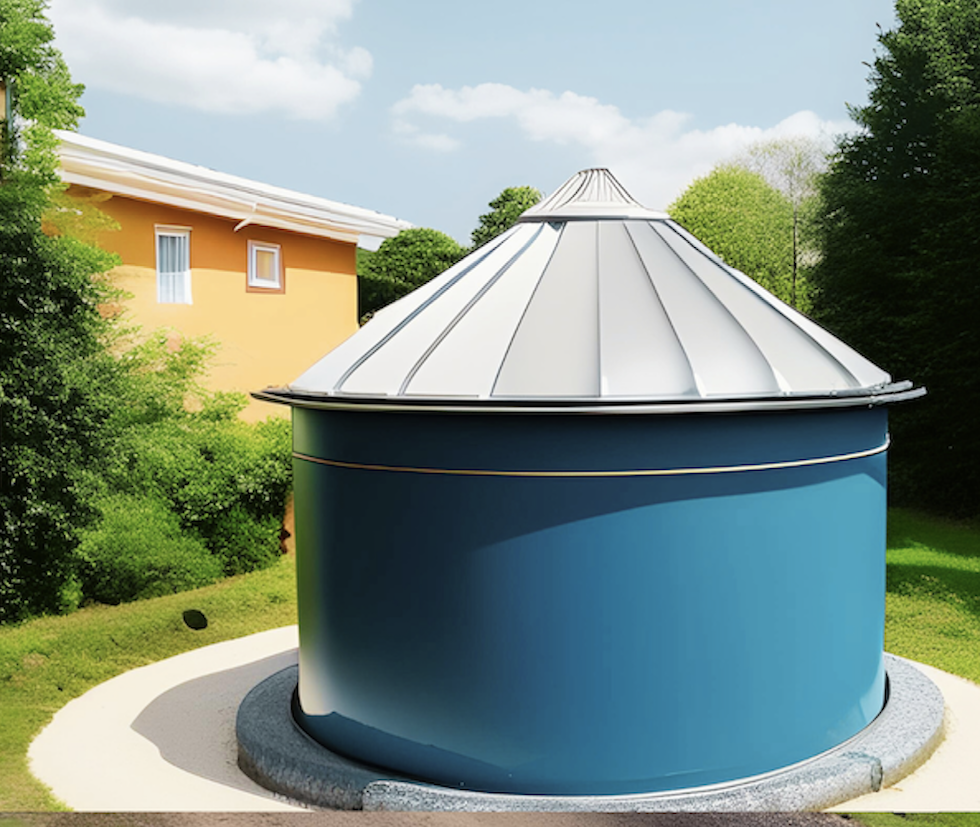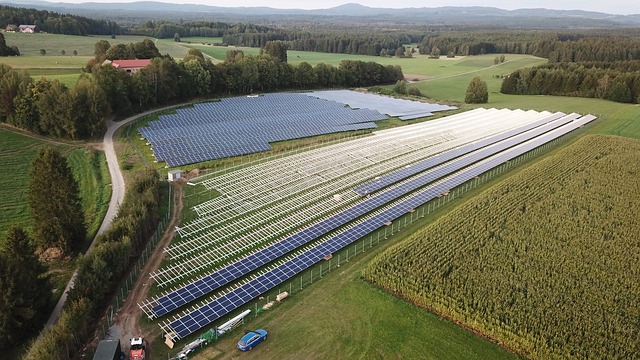Thermal mass is the material’s ability to absorb and store heat energy before releasing it. It is used in buildings to maintain the appropriate temperature of the rooms. When sunlight falls on a thermal mass material, it can absorb and store the heat from the sun. Further, it releases the stored heat during the night and keeps the room warm and cozy. Thermal mass material helps to reduce the energy consumption required for heating and cooling in the buildings. Therefore, high thermal mass materials in the buildings or homes favour energy-efficiency or energy-efficient home design.
The thermal mass materials and their properties and layers determine the time-dependent heat loss through a home or building exposed to variable temperatures. Concrete, bricks, tiles, and stones are some examples of thermal mass materials. These materials require a lot of heat energy to alter the stored temperature. So, they can absorb whatever temperature they are exposed to for a long time. The thermal mass materials are good conductors of heat.
Other materials like timber and insulation foam have low thermal mass as they cannot store heat energy long. So, some of these materials are bad conductors of heat.
This article will discuss thermal mass, how it works, its use in houses and buildings, and a few advantages and disadvantages of using thermal mass.
How Does Thermal Mass Work?
You can consider thermal mass as a battery that stores energy for later use. It absorbs heat energy during the day and releases it at night, keeping your room warm and comfortable. In summer, the thermal mass releases cool breezes. Whereas in winter, it releases heat to keep the insides of the room warm. Ideally, thermal mass materials help to cool the buildings during the daytime and warmer during the nighttime.
In general, high thermal mass materials have a long thermal lag. Thermal lag is the time rate at which a thermal material releases the stored heat.
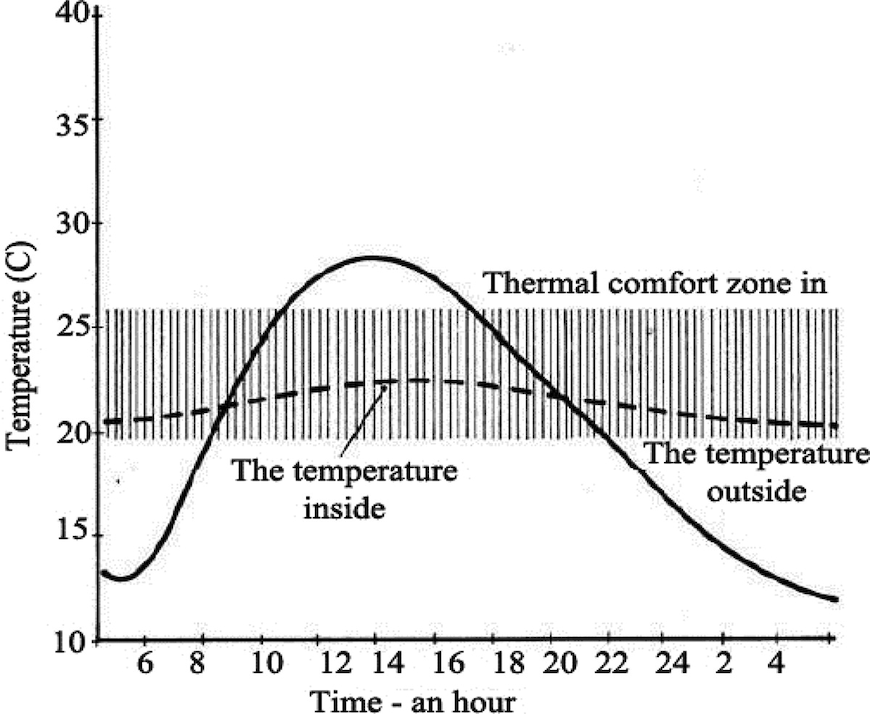
Figure 1 shows changes in the temperature due to thermal mass material (Sharaf and Zampieri, 2020)
Thermal mass is not similar to insulation that stops heat flow from inside and outside of a building. Instead, thermal mass stores and releases heat later. Therefore, it is most useful when the day and night temperatures have a significant difference. Thermal mass materials act as heat-storing materials during the daytime and heat source during the nighttime.
Proper thermal mass use can delay heat flow in the building by as much as 10-12 hours, as shown in figure 1. So, it is warm throughout the night in winters, and it is cool in summers. Thermal mass can also absorb heat generated by office machinery and lights. This heat is re-released when the space is emptied.
The difference in temperature between two spaces favours heat transfer. The hot air moves from the space with higher temperatures towards the area with the lowest temperature until the temperature reaches equilibrium on both sides.
In Winter
The thermal mass absorbs the heat from the sun by direct exposure through the windows of a building. Then, it re-radiates the heat at night as warm air back into the rooms, as shown in figure 2.
In Summer
The thermal mass absorbs heat during the daytime and releases it during the night. At night, the air is flushed out through natural ventilation. It allows cool night breezes to pass over the thermal mass materials and takes away all the preserved energy, as shown in figure 2.
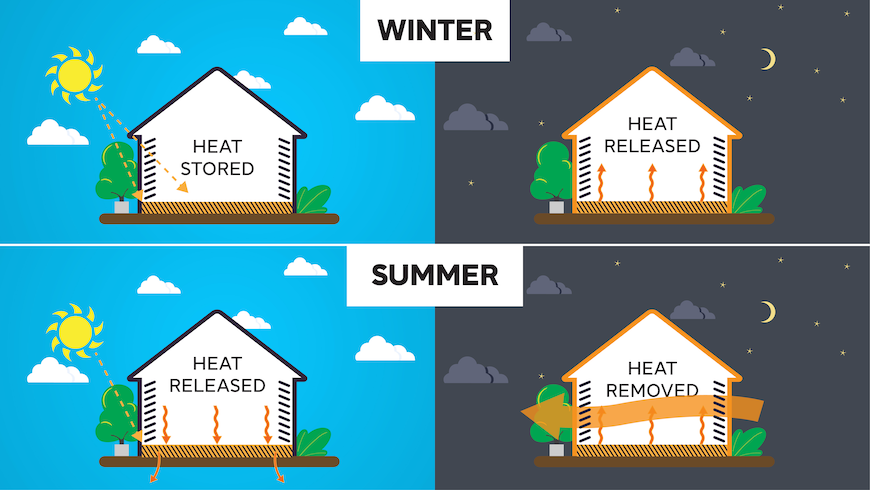
Figure 2 shows thermal mass use in summer and winter
To protect against overheating in summer, you need shading and insulation.
Thermal Mass Materials
Concrete is one of the most commonly used thermal mass materials. It consists of cement, water, and aggregates. Therefore, to improve the thermal behaviour of the concrete, we can manipulate the proportions of its components without compromising the quality. Other materials include tiles, bricks, stone, rammed earth, dense concrete blocks, water, gypsum plaster, steel, timber, etc. Water is one of the best thermal mass materials. It is because it has the highest specific heat capacity among all different materials.
Many factors determine the efficiency of thermal mass materials. Efficiency refers to how good a material is at absorbing, storing, and releasing heat. Below are some of the factors that determine the efficiency of the materials.
- Dense and heavy: If the material has a high density, it can absorb and store more heat. Conversely, lighter materials like wood cannot absorb and keep heat. Hence, they are not considered thermal mass materials.
- Good conductor of heat: A material is said to be a good conductor of heat if it allows heat to pass through easily. Thermal mass materials allow heat to flow in and out.
- Dark or textured surface: Dark or textured materials can absorb and re-radiate heat more efficiently.
The material’s property to absorb, store, and release heat varies depending on the material properties. For example, a brick wall can absorb more heat than a timber-framed cavity wall, even though both have the same thickness.
The materials in the room capture sunlight through the walls, floor, and other surfaces. The effectiveness of the material depends on what the material is made of and how thick it is. For example, a thermal mass material like a concrete slab floor absorbs heat quickly and releases it slowly. Conversely, non-thermal materials absorb heat slowly but remove it quickly.
The thermal mass of materials is determined by high specific heat capacity, thermal conductivity, and high density. Thermal capacity is the amount of thermal energy required to raise the temperature of 1 kilogram of material by 1degree K. High thermal mass material has high specific heat capacity. The density is the mass or weight per unit volume (kg/m3). Density increases with an increase in thermal mass. Similarly, thermal conductivity determines the material’s property to conduct heat. It is measured in watts per meter Kelvin or degree (W/mkal) (Sharaf and Zampieri, 2020).
Thermal Mass Efficiency
Thermal mass materials use less energy to produce maximum results. Concrete walls can absorb more energy before their temperature increases by one degree. As a result, they can perform during cooler times at night and for a longer time.
Thermal mass can effectively eliminate the requirement of air conditioners that consume much energy. It can operate without external radiant heaters, which consume electricity and increase the carbon footprint. Thermal mass is energy-efficient as it uses renewable energy (solar) to operate.
How to Integrate Thermal Mass into a Building?
Homeowners use thermal mass to maintain warmth and comfort inside the building. Further, they also use it to reduce their utility bills for heating and electricity. Using thermal mass is also good for the environment as it reduces carbon footprint. Kuczynski and Staszczuk (2020) found that improving the wall's thermal mass significantly lowered the summer indoor temperature. Higher thermal mass inside the buildings contributes to storing tremendous heat energy.
A passive solar home design can balance the building performance with heating and air conditioning demands.
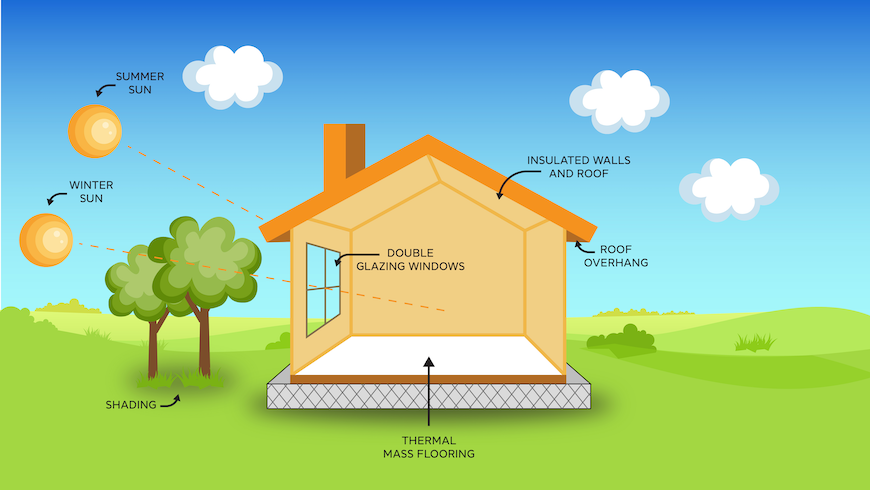
Figure 3 shows the passive solar design with thermal mass
Also Read: Top Energy Efficiency Examples. How People Are Using Renewable Energy For Their Energy Needs
Thermal mass materials like concrete, stone, tile, bricks, etc., absorb heat from the sunlight. They are also used to hold warm air during cooling seasons. These materials are primarily used in floors and walls to capture the heat from the sun.
Since water has a high thermal mass, you can also use water storage and phase change materials. However, you must ensure that the thermal mass materials should be appropriately exposed to the sunlight during the day.
The materials absorb heat mainly through windows or indirectly through the heating of the room's fabric. For instance, the sun produces short-wave infrared radiation that can pass through glass windows and heat the room and internal material. So, when the sunlight enters the room, it forms passive heating.
The internal fabric inside the room then produces long-wave infrared radiation that cannot pass back through the glass of solar gain windows. So, the heat is absorbed inside the room. It acts as a thermal mass greenhouse.
You must select the design and construction materials properly to maximize the solar gain effectiveness in buildings. Further, you should place and use the materials such that they can easily absorb solar radiation.
During the heating seasons, the passive home design should control overheating. While designing the buildings, designers need to consider location, landscape, orientation, thermal mass, insulation, shading, window positions, materials to be used, etc.
In buildings, external shading can be effective in preventing midday sunlight during summer. It also allows low-level winter sun to enter easily during the winter seasons. In addition, thermal mass materials like Trombe wall can store heat from the sun and release it slowly for a constant heat source.
Thermal mass in floors
The most effective way to use a thermal mass in a building is to install a concrete slab insulated under and around the edge directly in contact with the ground and the floors.
Similarly, brick, compressed earth, or suspended concrete slabs are good examples of floor thermal mass materials. A polished or tiled surface increases the heat absorption from the sun. However, carpets or rugs used on the surface reduce the absorption capability of the material.
The external or internal walls should be built with high thermal mass materials like concrete, brick, and rammed earth. In addition, insulated exterior walls can prevent heat loss.
Trombe walls are most commonly used in buildings. They are dark-colored, north-facing walls usually made of concrete or other materials. The heat passes through these walls in several hours to be released on the insides of the rooms. The walls release heat when the outside temperature drops in the evening and night.
Things to consider when installing thermal mass in buildings
1. Proper sunlight exposure
The materials should receive proper sunlight during the day. You should insulate the insides of thermal mass materials that do not receive direct sunlight or store heat from radiant sources. Thermal mass will absorb heat from the air to balance the temperature.
2. Insulation
Insulation maximizes the benefits of thermal mass. Therefore, you should insulate the thermal mass to prevent temperature fluctuations on the outside. Improper insulation will cause the thermal mass to be useless.
3. Dry concrete
Concrete materials should be dry. You should avoid internal moisture. Otherwise, the material will not work to its best potential. Use ventilation and other measures to prevent moisture and humidity.
Adding Thermal Mass to an Existing Home
Thermal mass is suitable for building energy-efficient homes. Usually, concrete slabs act as an excellent thermal mass in a north-facing room of a house.
Replacing carpet floors with ceramic tiles is an excellent option to add thermal mass. It prevents overheating in the summer and absorbs solar heat in winter.
Moreover, use in-floor heating by installing concrete, slate, or tile floors that store heat and slowly release it. These materials will also be cool in summer.
Similarly, use a brick or stone feature wall directly exposed to sunlight or placed near a radiant heat source. In the case of an external wall, it must be insulated to prevent overheating.
Pros and Cons of Thermal Mass
Pros
Thermal mass provides a natural temperature balance in the summer and winter seasons.
It eliminates the need for heating and cooling devices for homes and buildings.
It doesn’t require electricity and works even during power outages.
In the winter seasons, when heat is necessary, thermal mass slowly raises the room's temperature and reduces temperature drop.
Thermal mass maintains warm surface temperature and thus keeps the room warm comfortable.
Walls with thermal mass create "thermal lag" and affect the heat flow from inside and outside of the wall.
Thermal mass is environmentally friendly as it directly depends upon solar heat and reduces the need for fuel-based heaters. As a result, it reduces carbon emissions into the atmosphere.
Cons
Thermal mass is not practical when you have to keep the home empty for several days. Having a thermal mass will keep the house warm, but it will take longer to cool down.
Thermal mass does not allow you to control the heat to the exact temperature of your preference as in conventional heating systems like air conditioners. Sometimes, it takes a long time for the room to heat up or cool down, which may be uncomfortable.
On peak summer days, opening windows to cool the house might not be an efficient solution as thermal mass takes a long time to release heat, especially with many materials.
Conclusion
Thermal mass captures the heat energy from the sun. It can store the heat and re-radiate it. It uses the concept of solar gain to heat the insides of the buildings. Thermal mass materials like concrete, tiles, stones, and bricks have high density and heat capacity. Concrete slabs are the most commonly used thermal mass at home.
Thermal mass is energy-efficient as it uses solar energy for heating and cooling. So, it is helpful throughout the year, in all seasons. However, passive solar home design is required to install thermal mass at home. It means you must ensure that thermal mass materials are exposed to direct sunlight in winter. On the other hand, you must use shading and insulation to protect against overheating in summer.
Thermal mass provides an energy-efficient solution for heating and cooling of the house or building. However, it is essential to consider the design of the house before implementing this concept.
Also Read: 7 Tips for Using Natural Energy at Home
Frequently Asked Questions (FAQs)
1. What is thermal mass?
Thermal mass is the material’s property to absorb, store, and release heat. It is essential for both heating and cooling and thus for maintaining the room temperature in desirable ranges. So, it is helpful in all seasons for energy conservation in the buildings and homes. For heating, the materials should be exposed to sunlight during the day. With maximum exposure to direct sunlight, they can store and release the heat into the room or building when the air cools.
When installing thermal mass, you should consider passive design techniques with proper glazing, shading, ventilation, insulation, and thermal mass materials for effectual output.
2. What is a thermal mass flow meter?
A thermal mass flow meter is an appliance designed to measure gas mass flow. It is a thermal mass calculator that calculates the heat transfer as gas flows through a heated surface. The gas molecules transfer the heat when these molecules come in contact with a heated surface.
The numbers of gas molecules determine the flow measurement process. However, gas pressure and temperature do not alter the flow measurement. Therefore, the fluctuations in temperature and pressure of the incoming flow do not affect this process.
The thermal mass flow meter consists of a transmitter and temperature sensors—consisting of a flow sensor and temperature sensor. The temperature sensor measures the gas temperature. The flow sensor is self-heated to maintain a temperature difference a little bit above the temperature sensor. Further, it detects the gas flow through the meter, and then the heat transfer occurs.
3. Where should you have thermal mass?
You should put thermal mass to absorb maximum heat in the winter seasons. It should be shaded in summer seasons or warmer days. The best place is near windows where it can be exposed to the sun and also be shaded.
Moreover, you can also place it in other glazed areas where sunlight is available and near other radiant heating sources, wood burners, or heaters.
Thermal mass kept on wall or floor, exposed to direct sunlight, is better than that kept in low sunlight areas. However, the exposure to only warm air is not sufficient for maximum thermal efficiency.
4. Where shouldn't you put thermal mass?
Thermal mass will be of no or little use if it is placed and misused. You should not put thermal mass in areas that are cold and unexposed to any heat source. These areas are usually entryways or unheated hallways.
So, rooms and areas that are not exposed to much sun are not appropriate for thermal mass. Furthermore, areas with poor insulation that are not shaded to protect overheating are also not good to place thermal mass.
Cool areas should have well-insulated and lightweight construction walls. Also, thermal mass will have no use in locations that only have long, cold winters, with not much sunlight.
5. What is the best material for thermal mass?
Different thermal mass materials have various heat capacities. It is determined by two factors—specific heat and density. For example, materials like concrete and stone have high densities. Hence, they are suitable thermal mass materials.
Specific heat and density of a material determine its volumetric heat capacity as:
Volumetric heat capacity = Specific heat * Density
The material with high volumetric heat capacity is considered to be an excellent thermal mass. Below Table 1 shows a list of materials with their respective volumetric heat capacities.
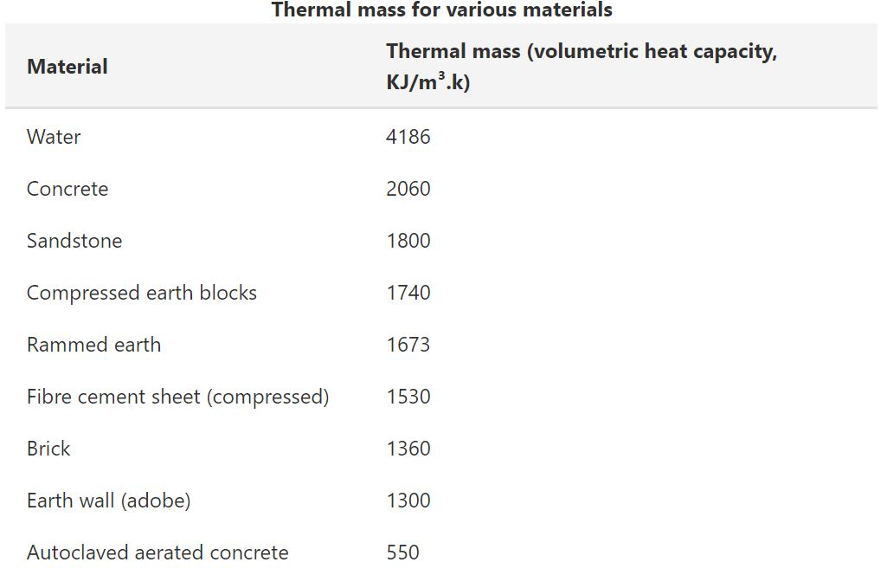
Table 1 shows thermal mass for various materials (Baggs and Mortensen, 2006)
As you can see, water has the maximum thermal mass. However, concrete is the best material for use on surfaces like floors, walls, and windows.
6. Is water an excellent thermal mass?
Water is a good conductor of heat. It has a high specific heat capacity than any other thermal mass material. It means that water can absorb more heat than any other material. However, it also needs more heat to raise the temperature than concrete, brick, or tile.
Studies show that water has high conductivity, specific heat, and heat capacity than concrete, brick, adobe, and gypsum. So, water is an excellent thermal mass because of its ability to absorb heat better than other materials.
7. Is concrete an excellent thermal mass?
Concrete is one of the most commonly used thermal mass materials. It has a high thermal mass, and its properties are similar to brick and stone. Further, it can absorb heat from the sun, store it, and release it during cool times at night.
The cooling capacity of concrete in a passive design is 25 W/m2, and that in an active system is up to 40 W/m2. It is because it has a high density and thermal conductivity.
Further, concrete also has a low thermal lag, representing the rate at which heat is absorbed and re-released.
8. How does mass affect thermal energy?
The object with a higher mass will have higher thermal energy at a constant temperature. For example, consider a small glass of water and large glass with almost double volume water compared to the small one. The water temperature remains the same in both containers.
The water molecules are almost double in the large glass due to the double volume of water. In this case, the water molecules in the large glass have higher kinetic energy, meaning water in the large glass has higher thermal energy than that in the small glass.
But, if objects have the same mass but different temperatures, the one with a high temperature will have a higher thermal mass.
9. What is the difference between thermal mass and thermal insulation?
Thermal mass is the ability of a material to absorb and store heat and releases it to either inside or outside the building later, creating an equilibrium of suitable temperature.
Thermal insulation is the ability of a material to block or slow down the heat transfer from inside or outside of the building.
The thermal mass efficiency of construction materials and thermal insulation determines the thermal performance of the building. In general, the material with a large thermal conductivity (k) value is a good heat conductor, and with a small thermal conductivity (k) value is a good heat insulator. Therefore, the perfect combination of such materials reduces the amount of heat transfer between the inside and outside of the building. Sometimes, this type of combination is known as the passive solar design.
10. Why is thermal mass good?
Thermal mass is suitable for many reasons. The best one is that it provides a comfortable environment inside the building. Usually, if surfaces like walls, floors, and windows have temperatures lower than our body temperature, we radiate heat towards them and feel calmer. But conversely, if the surface temperatures are warmer than the body temperature, they radiate heat towards us, and we feel warmer. So thermal mass maintains warm surface temperatures and thus provides friendly and comfortable surroundings.

 How it Works
How it Works Pricing
Pricing FAQ
FAQ Quiz
Quiz Contact Us
Contact Us
